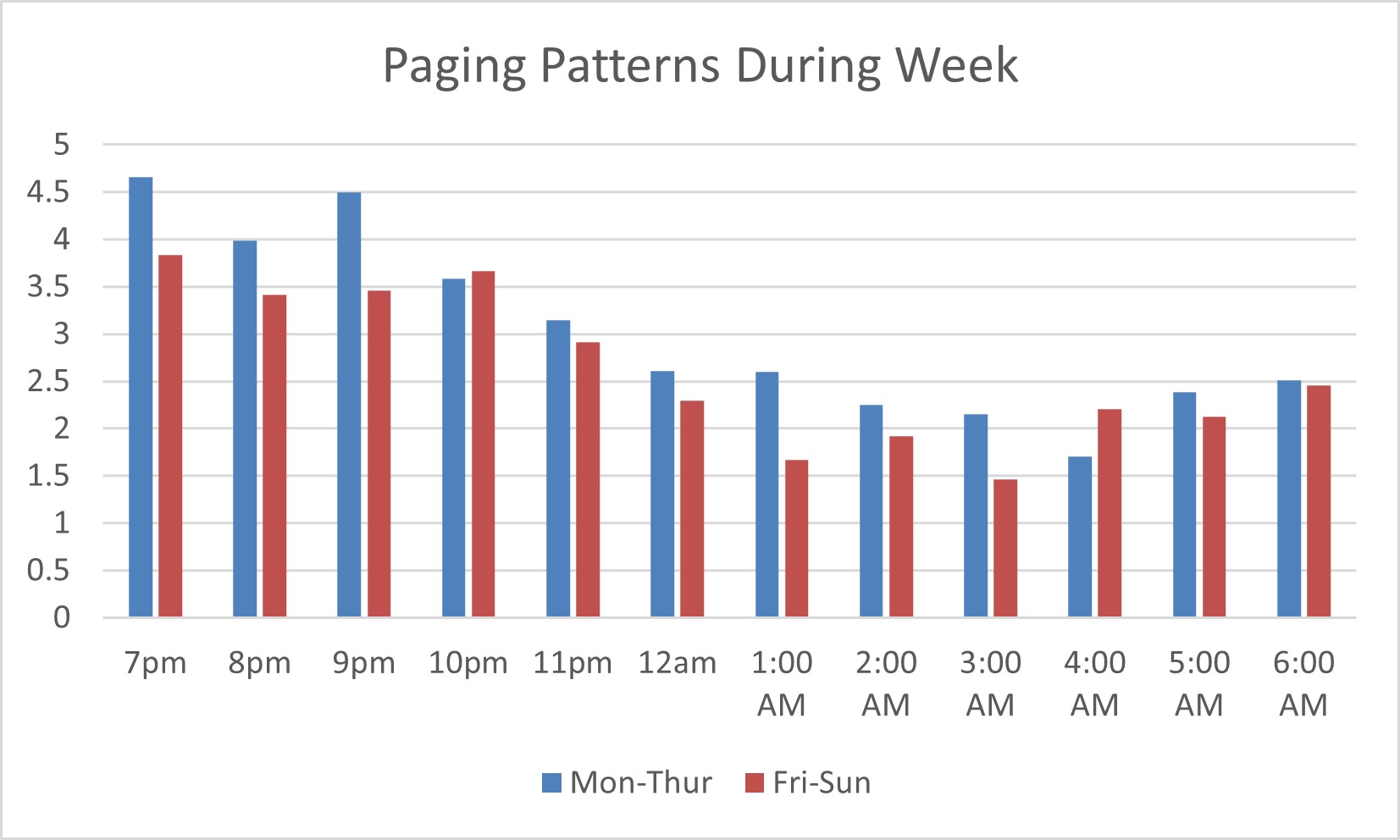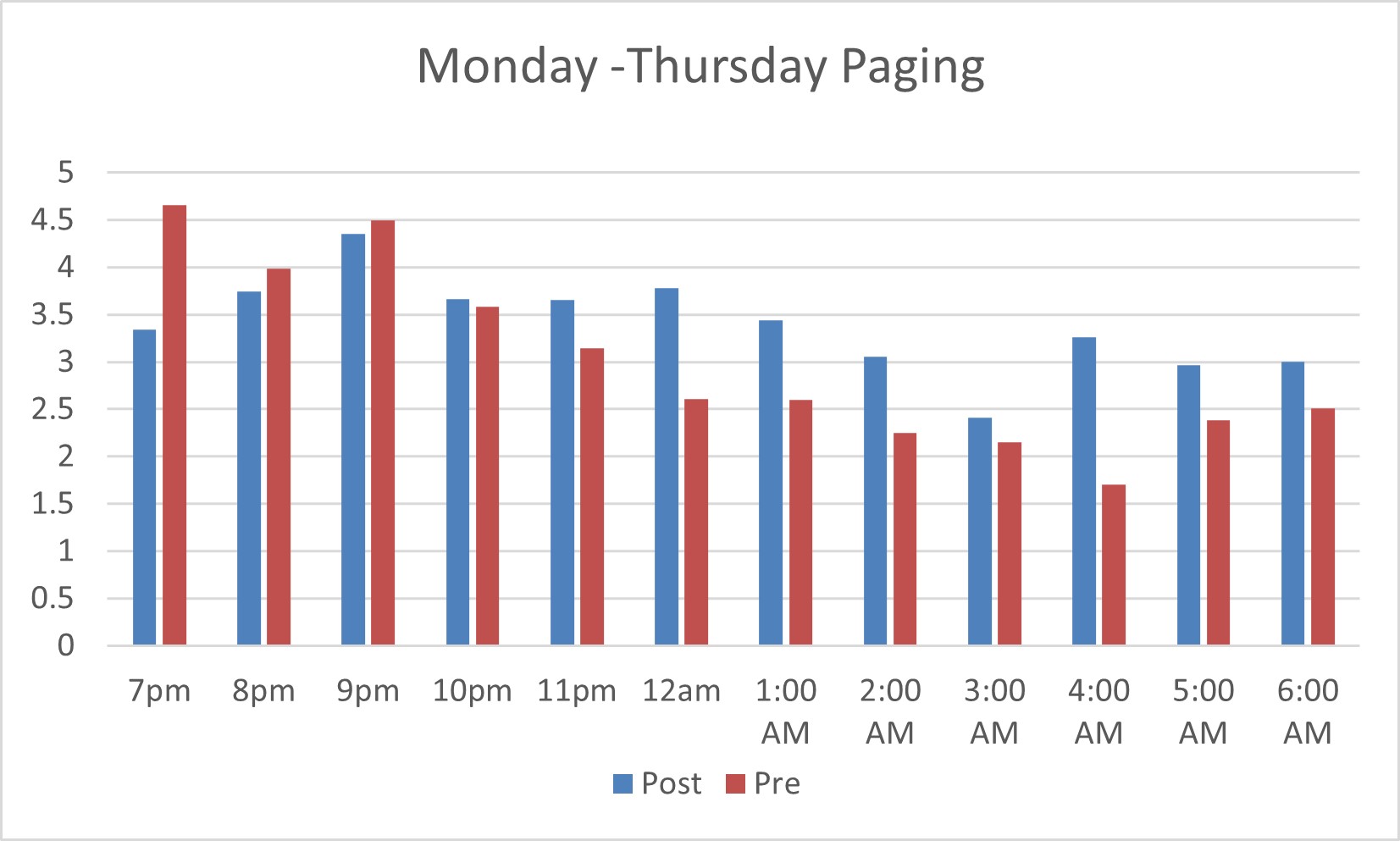Background: Night coverage for hospital medicine teams can be the most expensive and busy of all shifts. According to 2020 State of Hospital Medicine Report, only 5.7% of teaching centers use a combination of onsite and off-site night-time coverage. In July 2022, our academic hospital medicine team was asked to create an additional inpatient service to meet the needs our of health system. At the time, our current nocturnist obligations included 4-6 admissions per night to direct patient care services, triaging an additional 10-16 admissions to teaching services, receiving outside transfer requests, and providing cross-coverage to 60 patients averaging 30-50 pages per night. Because the current nocturnist obligations precluded the ability to provide additional night coverage of this new service, our team brainstormed potential cost-efficient models to expand night coverage. Three potential models were considered: (1) hire 2 additional nocturnists (~$700,000 per year), (2) hire 2 additional APPs (~$230,000 per year), and (3) create a 7-11pm virtual cross-cover moonlighting experience at $100 per hour (~$104,000 per year) offered to our senior residents. The last option was chosen for financial reasons.
Purpose: The purpose of this study is to evaluate the paging patterns before and after initiation of our virtual 7-11pm cross-cover moonlighting experience.
Description: To support the onsite nocturnist, a Monday-Thursday virtual tele-crosscover moonlighting shift was created in which the provider would serve as “first call” for all patients from 7-11pm. This interval was selected as it provides support during the busiest portion of the nocturnist shift, while allowing shifts to be filled by senior internal medicine residents without violating ACGME duty hours. When concerns about a patient’s clinical status warranted in person evaluation, a page would be forwarded from the virtual provider to the onsite nocturnist.Pre/post-intervention paging patterns at a tertiary care academic medical center were evaluated. Pre-intervention data demonstrated paging during Monday -Thursday is 14.7% higher than Friday-Sunday paging (36.1 vs 31.4 average pages per shift respectively), and the busiest time for paging is 7-11pm (Figure 1). Post-intervention, the average number of pages the virtual cross-cover moonlighter received was 16.8 (range 2-34). Of the pages received by the cross-cover moonlighter, an average of 1.3 pages per shift needed to be escalated to the onsite nocturnist (range 0-7).
Conclusions: A 7-11pm tele-crosscover moonlighting model may be an effective and cost-efficient way to provide support for onsite nocturnists with high paging burdens. Subjective reports from the onsite nocturnists have been very positive and while the numbers are modest, this intervention has led to increased quality of work for the nocturnists. Unfortunately, there was an overall increase in the total paging in the post-intervention which we believe is likely due to an increase in the number of travelling nurses and new hires. One major limitation is the challenge with dissemination over 12 different nursing units due to lack of geographic rounding, despite our best attempts to meet with each nurse manager Future directions include surveying the crosscover moonlighters, nocturnists, and nurses to gain additional perspectives.


